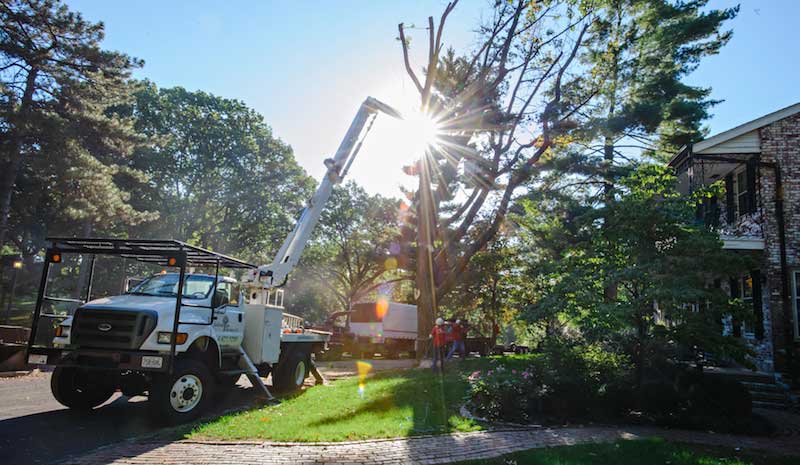Keeping trees alive may seem like an easy task. Water, sun, and good soil are the three main ingredients to growing and keeping one alive. However, we know that there are so many ways for a tree to die. At Jackson Tree Service, dealing with split, dead, or broken trees is a daily occurrence. With our extensive experience, we know what is most likely to kill your trees in the St. Louis area. Here are our top five.
Poor Tree Trimming Practices
One of the most detrimental things that can be done to a tree is for it to be topped. Topping is the act of removing large portions of the top of a tree, leaving stubs and small branches to take over for the tree which cannot sustain it. Topping is also very harsh on the tree’s ability to make food. This happens when the top portion of the tree is cut off and therefore all of the leaves, 50-100%, are cut off. Trees use photosynthesis through their leaves to make food and grow. When a tree is topped, growth potential is cut down by an immeasurable amount.
Oak Galls
Galls are a type of nests for wasp that looks like round mud balls wrapped around branches on Oak trees. While you may be thinking that wasps are an unwanted guest anywhere near your home, you also don’t want them near your trees. The wasp will nest in the gall and then eventually “bloom” or hatch, but while they are in their gall it suffocates the tree branch. There is no easy way to avoid this type of gall except to prune trees by cutting away all dead branches – deadwooding. While pruning may help, sometimes they cannot be avoided. We have seen trees from Maryland Heights, Creve Coeur, and Ladue especially impacted by oak galls.
Ash Borers
Also known as the Emerald Ash Borer, it is native to Asia and feeds on Ash tree species. The insect lays its eggs in the crevices of Ash bark where they grow and eventually hatch. This invasive insect will kill your tree no matter the age or size. Some of the first things you may notice are branch die off and/or thinning beginning at the top and eventually killing the entire tree. Some other things that are noticeable are D shaped holes in the tree bark and zigzag patterns throughout. Many municipalities, including Chesterfield, have implemented ash tree removal programs.
Mother Nature
When thinking of Mother Nature and trees, one might associate them with lightning, like flashes of movie scenes where lightning dramatically strikes a tree, killing it instantly or making it catch fire. While this may be spot on, it is one of the least likely things to happen to your trees. In St. Louis, trees are much more likely to be taken out by very strong storms or possibly even heavy snow. St. Louis is also located in one of the most tornado-heavy areas in the United States. While the area has not been bombarded with tornadoes like a lot of other areas in Missouri in the past couple of years, small funnels and very heavy storms associated with them hit hard during certain months. All of these things can hurt and possibly kill trees at any time of the year, unexpectedly, so it is important to be prepared.
Lack of Regular Tree Maintenance
There is something to be said for leaving trees alone and letting them grow for years. That is, after all, how there are trees such as the General Sherman tree in Sequoia National Park and most of the trees in Redwood National Park that stagger above all others. However, most local St. Louis trees in older residential areas like Ladue, Olivette, Maplewood, etc. need regular maintenance to stay healthy and prevent damage to property (and possibly hurt the tree even more). Dead branches weigh down trees by taking away resources that are vital elsewhere and become an even bigger problem if they break and leave an empty hole in the tree where the branch once was, leaving it susceptible to many things. Another plus of pruning, shaping, and other regular maintenance, is the general appealing look. Regular check-ups are vital in keeping healthy trees.
Worried about one of your trees or sure it has died? Call Jackson Tree Service to see how we can help!

